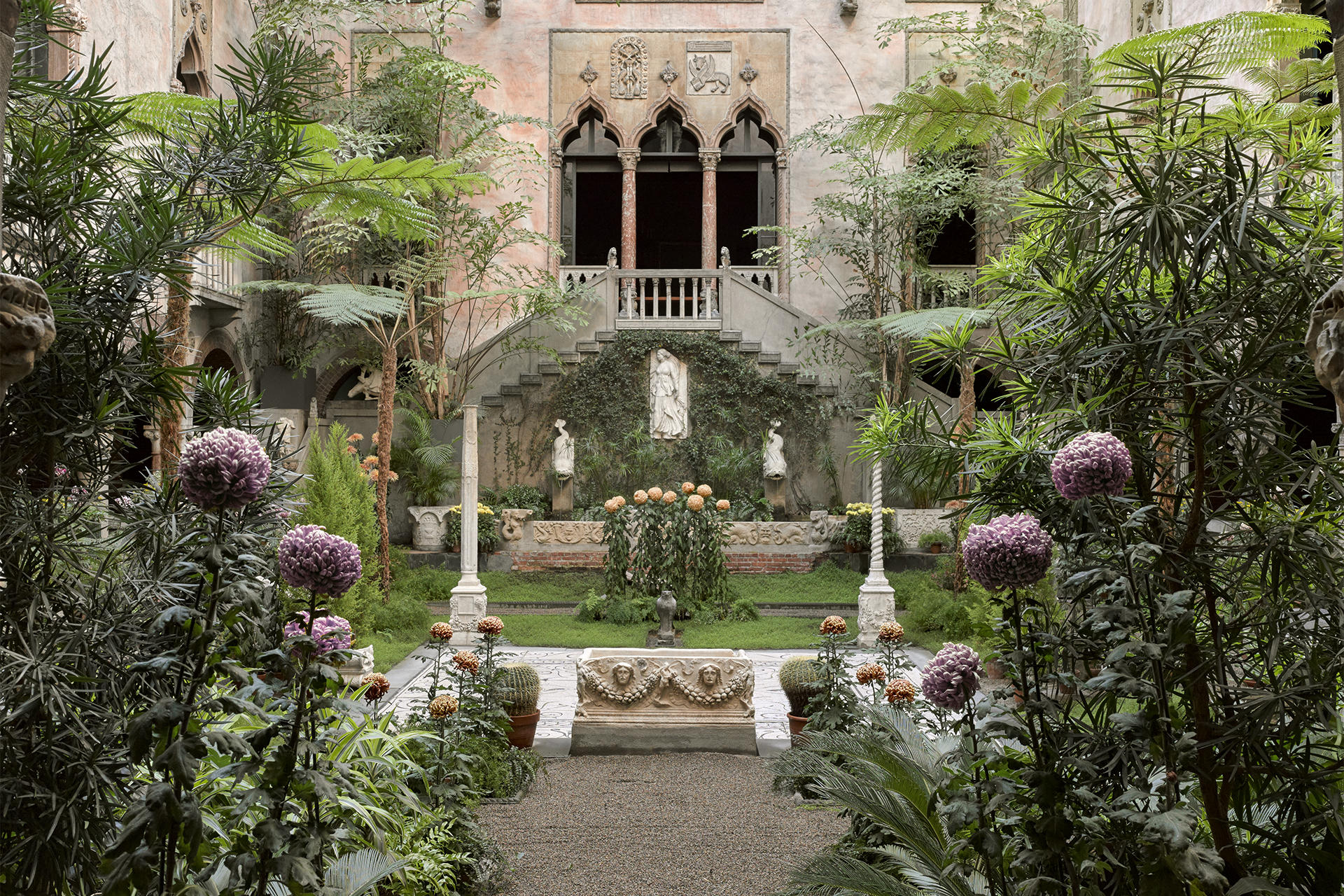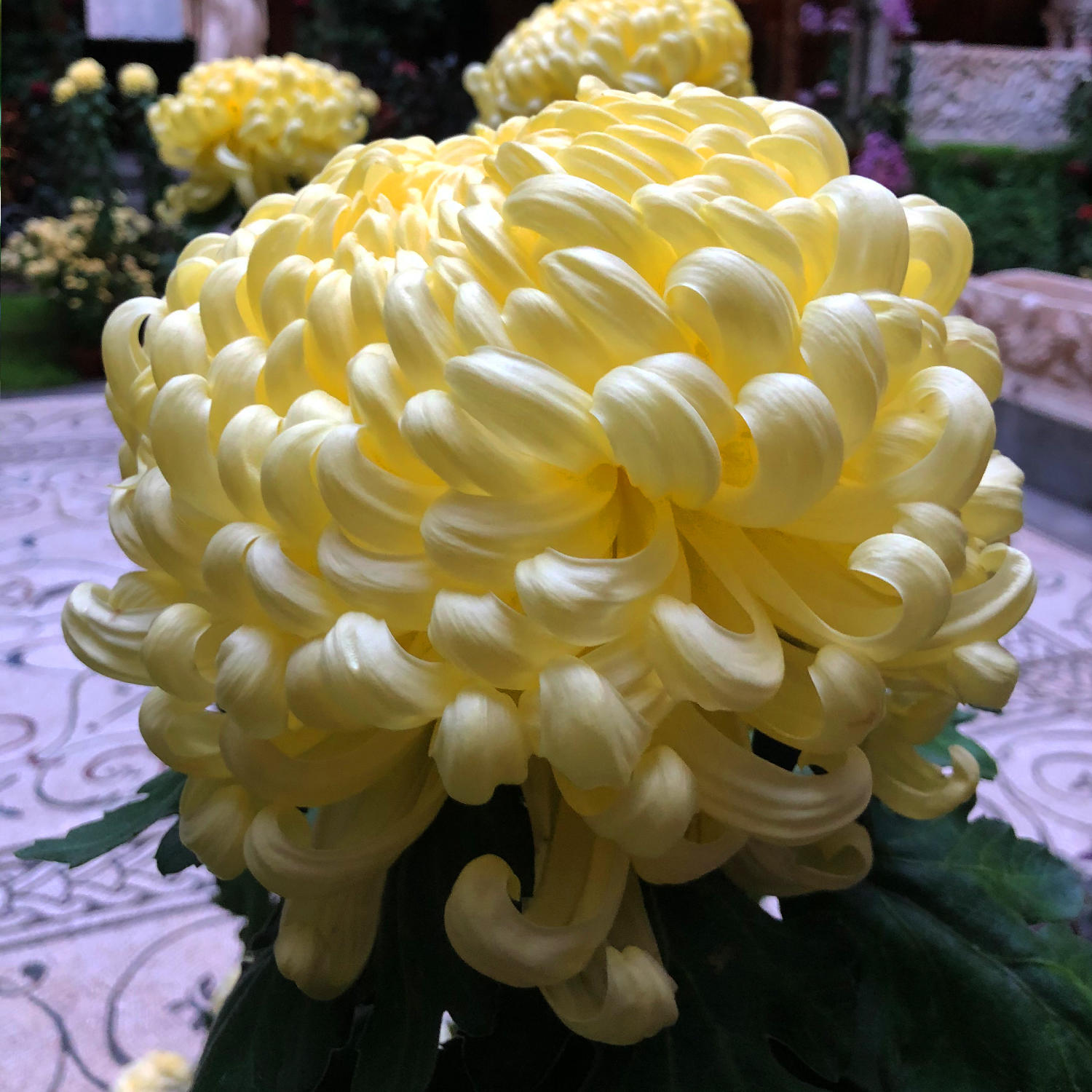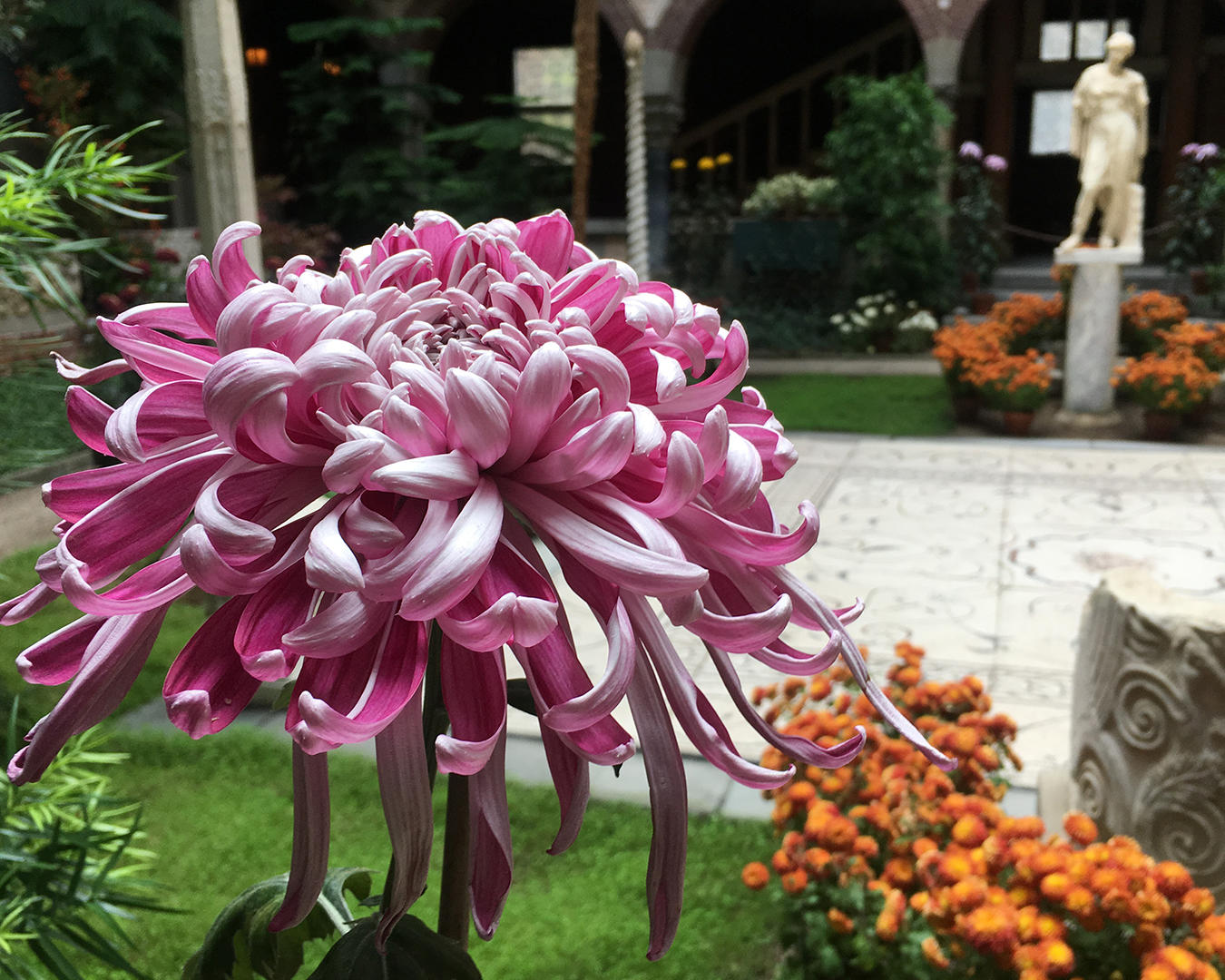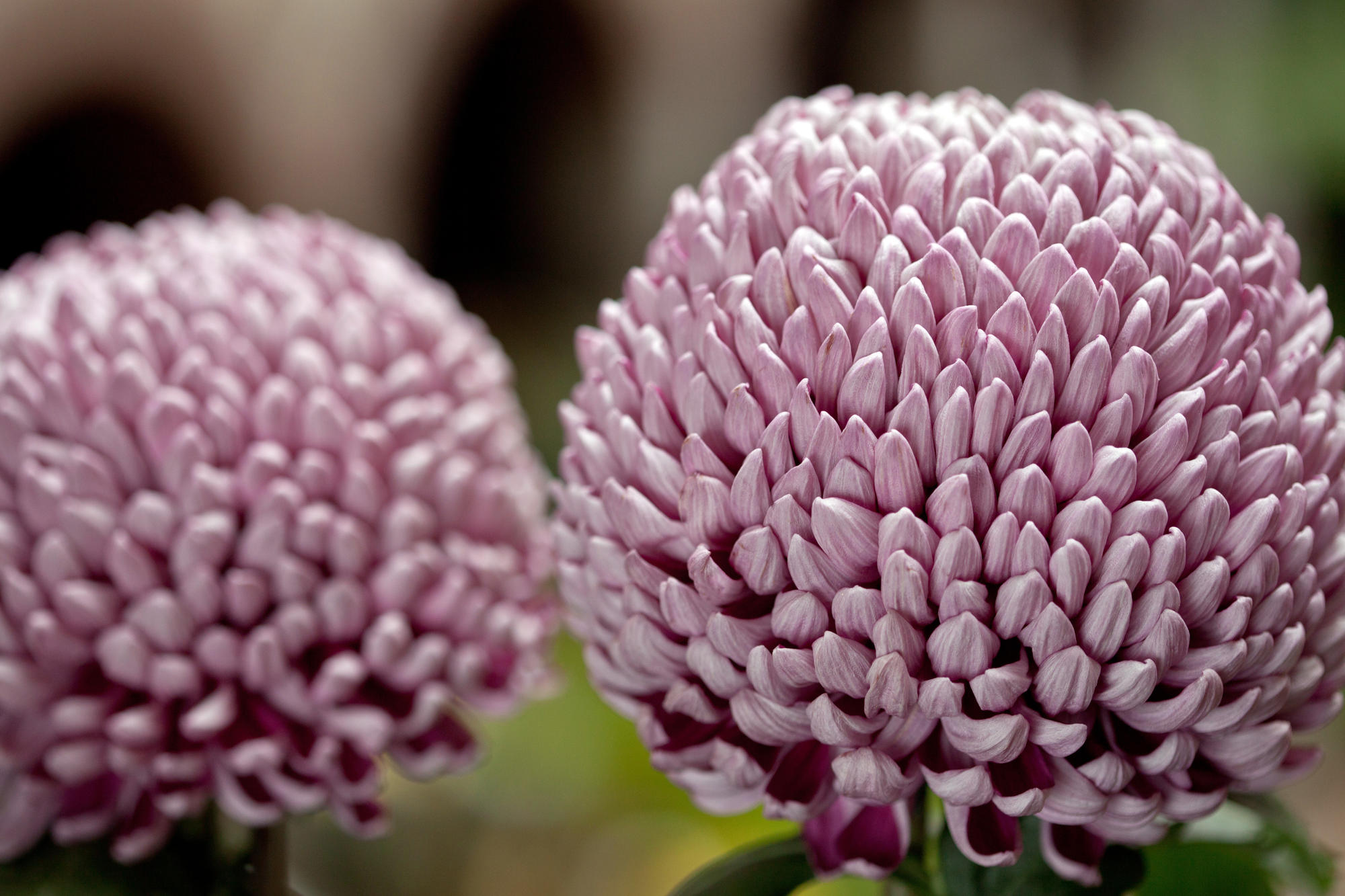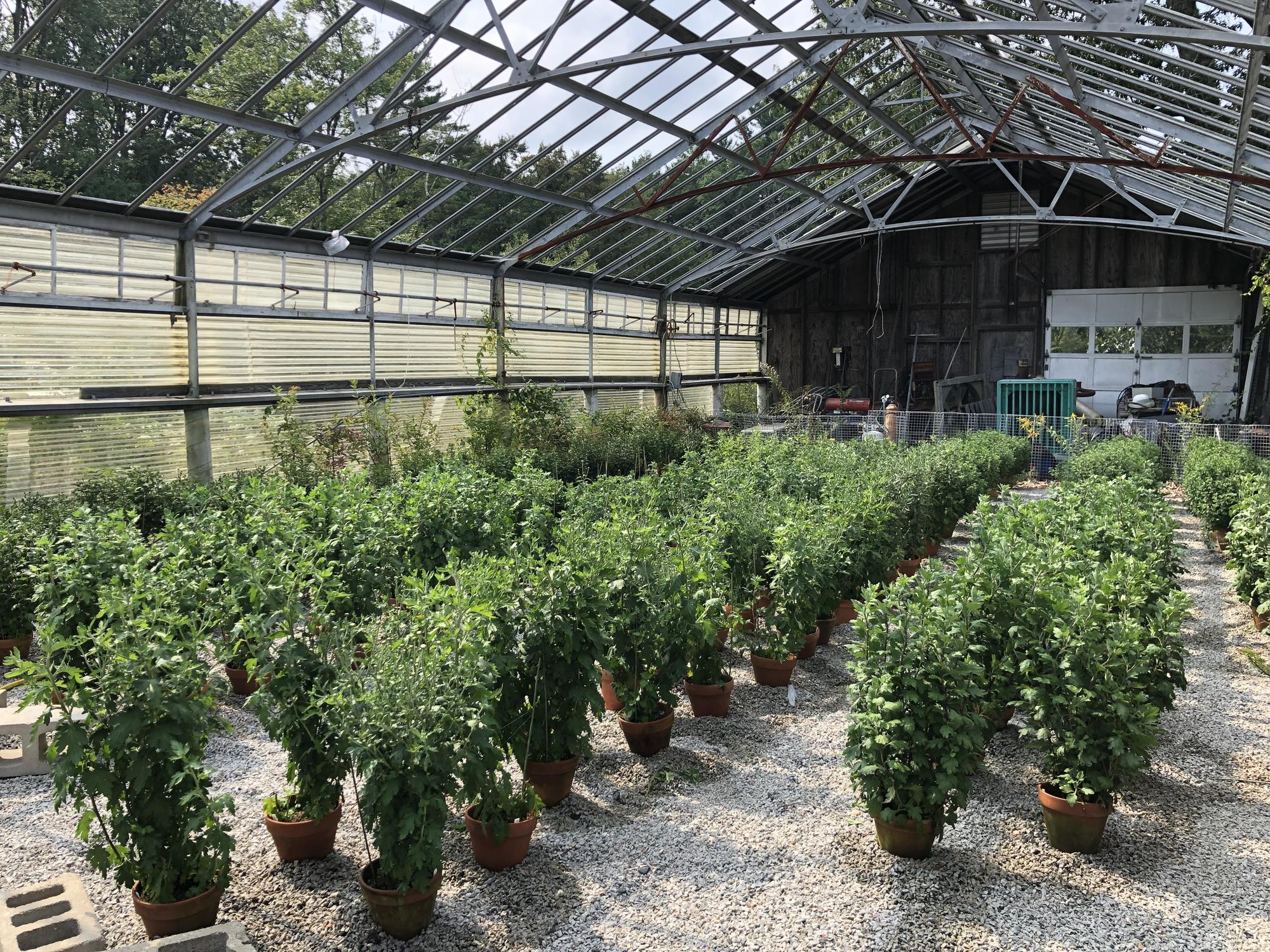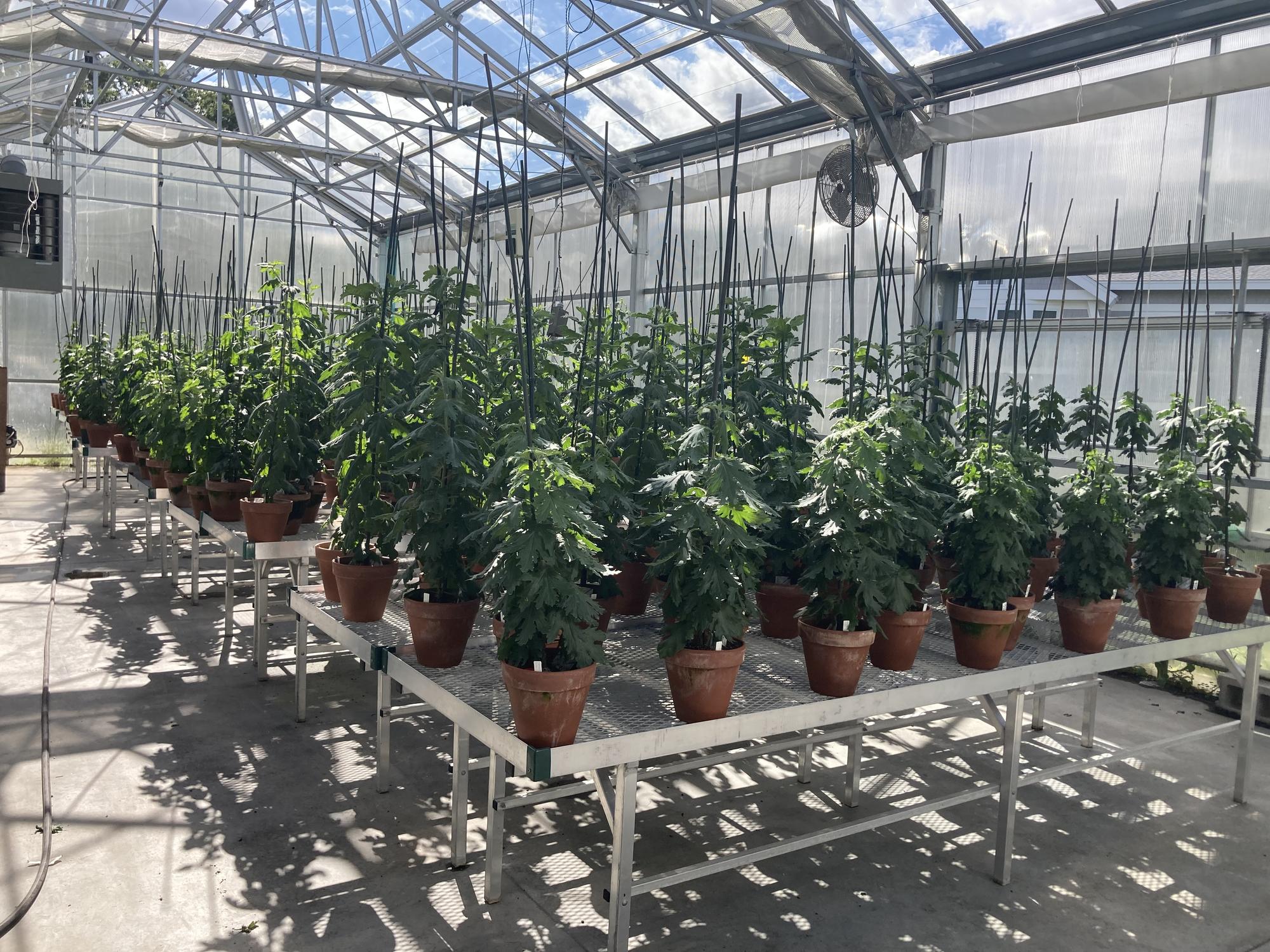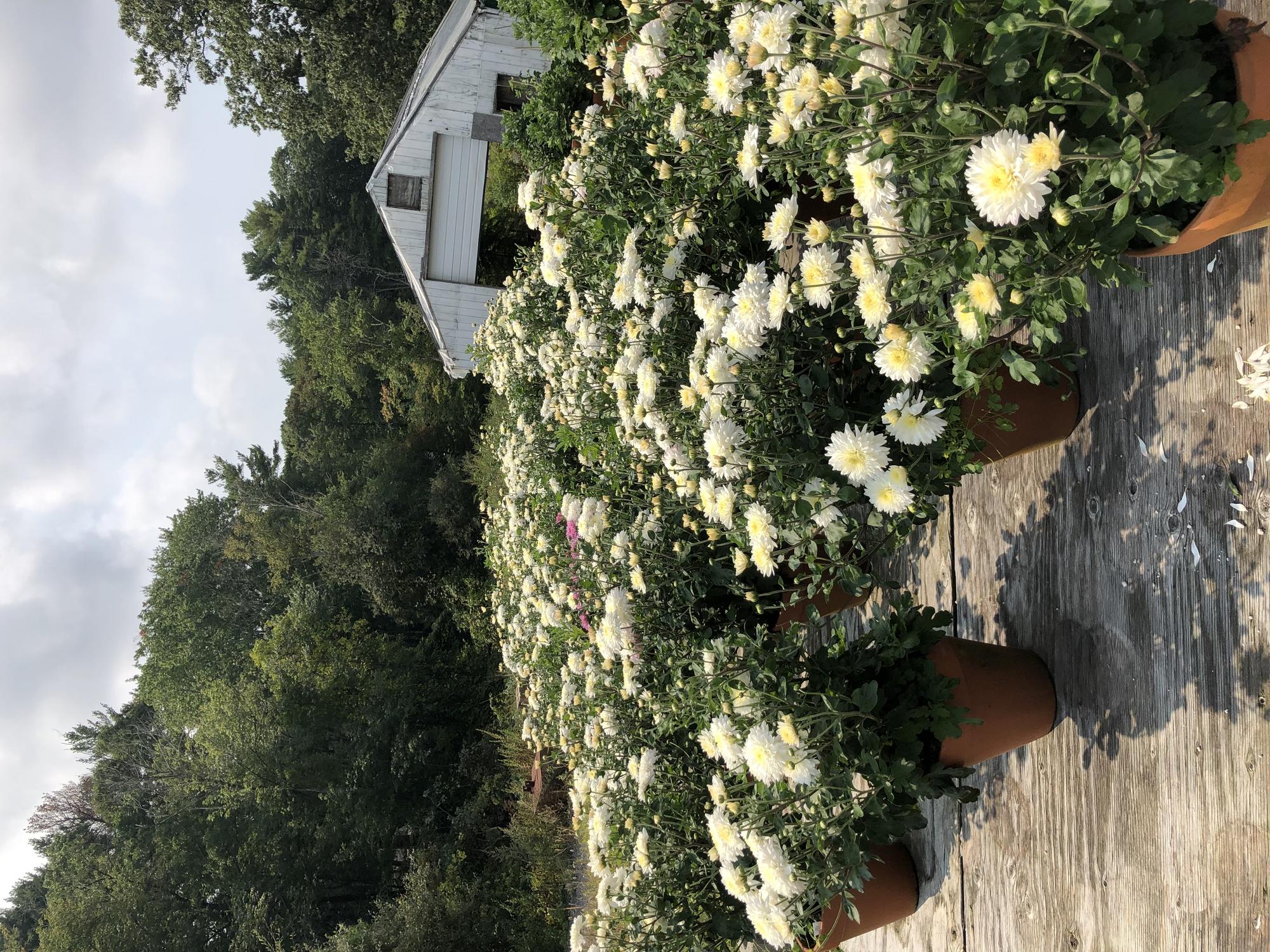The Audio Walk was produced by Sandy Goldberg of sgscripts.
As the days begin to shorten, the Courtyard presents a dramatic, bejeweled panacea to dark days. Chrysanthemums, which bloom with the fall equinox, transform the heart of the Gardner from late September through November. Throughout the season, chrysanthemums of various colors and species, accompanied by rich, moody foliage, make an appearance. A riot of glorious colors and surprising shapes, our chrysanthemum display has been a Gardner tradition since Isabella lived in the Palace, and beloved for generations.
Please note that the Courtyard displays are part of a living collection and as such the actual flowers may be different than what is described on our website.
THE GROWING PROCESS
To bring this spectacular display to life in the fall, over 500 terracotta pots of chrysanthemums are started from cuttings at the Gardner’s off-site greenhouses each spring. The plants receive weekly care as the horticulture team meticulously prunes, trains, and fertilizes the plants. The heartier bushes and sprays are grown outdoors while the display’s iconic Single Stem Chrysanthemums remain inside the greenhouses, safely tucked away from New England’s unpredictable weather.
The Single Stem Chrysanthemums—singular, grapefruit-sized flowers with sculpture-like petals crowning statuesque stems that grow over four feet tall—are the result of a Japanese pruning technique called ogiku. The Gardner Museum is one of just a small handful of institutions in the United States that uses this time-honored tradition; other practitioners include The New York Botanical Garden and The Botanic Garden of Smith College’s Lyman Conservatory, among others.
By mid-summer, these signature plants are cut down to a height of 12 inches in a practice called “topping,” which helps ensure a uniform height for their installation in the Courtyard. The plants produce buds as the fall equinox passes, resulting in hundreds of mums in a plethora of reds, yellows, oranges, and metallic purples—and promising another spectacular seasonal display.
HISTORIC ROOTS
This rambunctious display has deep historical roots and has brightened the autumn Courtyard since Isabella lived in the Palace. The Museum’s founder grew many chrysanthemum varieties herself on her Brookline estate, Green Hill, and won awards at the Massachusetts Horticultural Society’s Autumn Show. A pink-tinged chrysanthemum variety was even named after Isabella, and a buttery yellow variety that paints the display, ‘Gloria,’ is a direct descendant of one of her plants.
Native to East Asia and northeastern Europe, this flowering herb believed to hold the power of life has been cultivated for medicine in China for over 3,000 years. From China, migrating Buddhist monks are said to have brought the chrysanthemum to Japan as early as the 5th century.
Decades ago, Gardner horticulturists trained with a Japanese Chrysanthemum Master in the ogiku technique. Since then, the practice has been passed down the department’s generations through both oral history and hands-on observation. To learn more about the rich history of chrysanthemums at the Museum, read this blog by horticulturist Jenny Pore:
About John Lowell Gardner
John “Jack” L. Gardner was the great-grandnephew of Isabella Stewart Gardner and Chairman Emeritus of the Gardner Museum’s Board of Trustees.
Jack was a beloved member and guiding force for the Gardner community. He was an integral part of the board leadership for over 50 years, and his vision, advocacy, and generosity created much of what makes the Gardner Museum the vibrant cultural institution we know today. Not only did he work to preserve Isabella’s unparalleled collection, but he also helped propel the Museum into a modern era with his support for initiatives such as the construction of the New Wing. Jack’s legacy will remain a celebrated part of the Gardner Museum's history and evolution.
Following his death in January 2021, a small group of Jack’s fellow Board members, friends, and colleagues established an endowment fund to name the John Lowell Gardner Chrysanthemum Installation in perpetuity. This naming of the annual fall horticulture installation honors Jack’s lifetime of dedication to the Gardner, as well as his love of the Courtyard, which he saw as the heart of the Museum.
The Museum offers four special floral installations each year: chrysanthemums in the fall, nasturtiums in the spring, bellflowers in the summer, and the Holiday Courtyard in the winter. While the Courtyard is in bloom all year long, with ten transformations each year, these four installations celebrate iconic flowers with deep, historical roots at the Gardner, and whose height, color, and shape bring whimsy to the space to the delight of all visitors.
